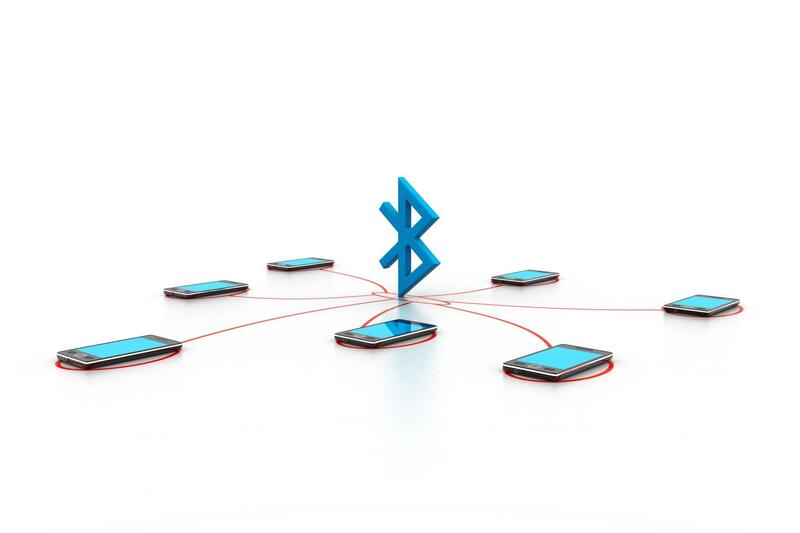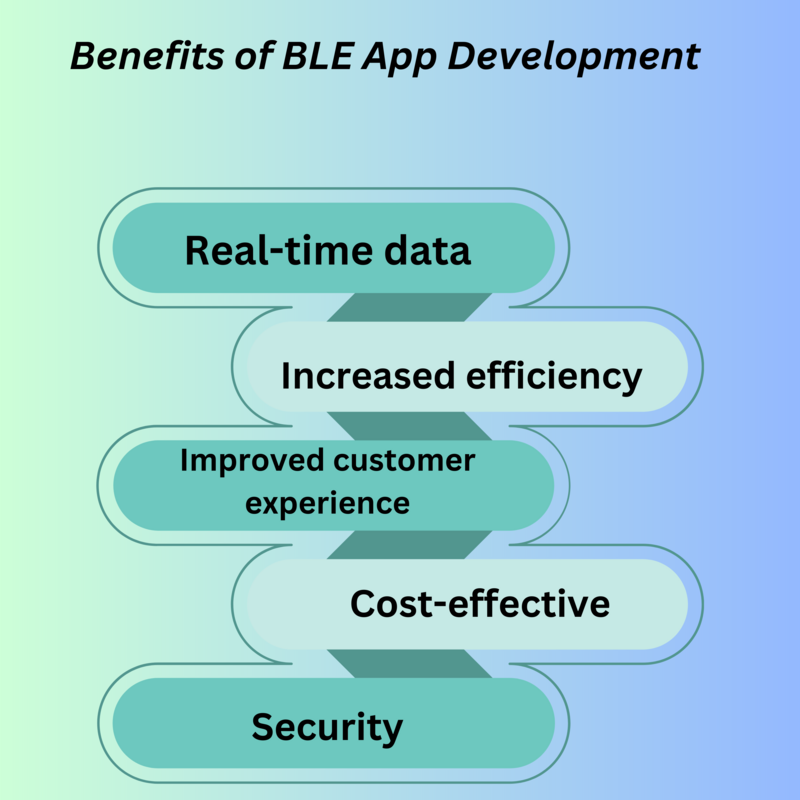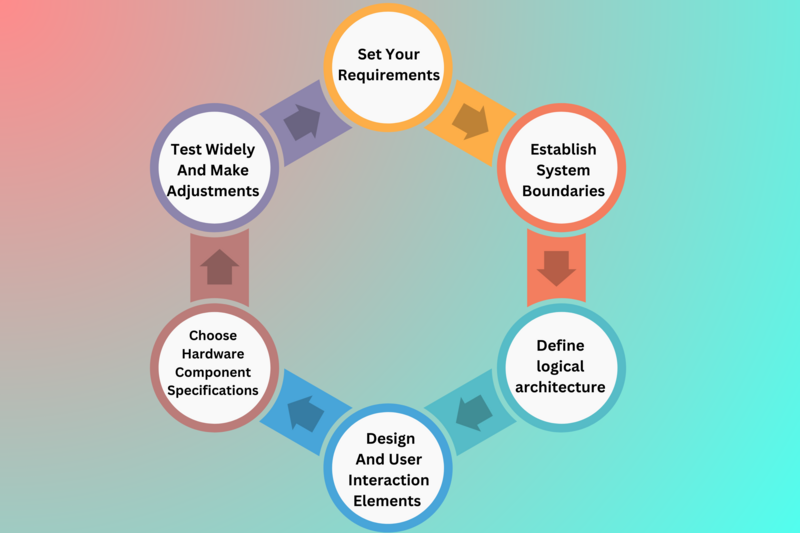With the rapid advancement of technology, Bluetooth Low Energy (BLE) has emerged as a driving force behind the seamless connectivity we experience in our everyday lives. As a result, Bluetooth Low Energy (BLE) technology has become an essential part of modern business operations. BLE technology allows businesses to connect and communicate with intelligent devices and sensors, providing real-time data and insights. BLE enables efficient communication between various devices, from fitness trackers and smartwatches to home automation systems and medical devices, while consuming minimal power. As we move towards a more interconnected world, understanding and harnessing the potential of BLE app development becomes increasingly crucial. In this blog, we will embark on a journey to explore the realm of BLE app development, uncovering its applications and benefits and providing valuable insights into the development process. Join us as we dive deep into the world of BLE, discovering how this technology is building the future and shaping our connected experiences. Bluetooth (BLE) app development is creating applications that use BLE technology to connect and communicate with intelligent devices and sensors. BLE technology is a low-power wireless communication protocol ideal for IoT (Internet of Things) applications. BLE technology is used in various industries, such as healthcare, retail, manufacturing, and logistics, to name a few.
Bluetooth Low Energy, or Bluetooth Smart, is a wireless communication protocol specifically designed for low-power devices. It extends the classic Bluetooth technology but focuses on energy efficiency and reduced data. This makes BLE ideal for applications that require long battery life, such as wearable devices, IoT sensors, and remote control systems.
One of the critical advantages of BLE is its ability to establish quick and seamless connections between devices. Unlike its predecessor, BLE devices can connect and exchange data without lengthy pairing processes. This makes BLE ideal for applications where appliances must communicate briefly and intermittently, such as transmitting small data bursts from a wearable fitness device to a smartphone.
BLE app development opens up a world of possibilities. Imagine controlling your smart home devices with a mobile app, monitoring your health and fitness goals with a wearable device, or even tracking your lost belongings through a Bluetooth-enabled tracking device. These are just a few examples of the diverse applications that can be developed using BLE technology.
When it comes to BLE app development, understanding the underlying architecture and protocols is essential. The development process typically involves the following:
- Designing an intuitive user interface.
- Establishing communication channels between devices.
- Implementing data transmission and reception.
- Ensuring security measures are in place to protect sensitive information.
Additionally, developers must consider compatibility with different operating systems and device types to ensure a seamless user experience across various platforms.
As we delve deeper into this blog series, we will explore the intricacies of BLE app development, provide step-by-step guides, share best practices, and showcase real-world examples. Whether you're an aspiring app developer, a tech enthusiast, or a business owner looking to leverage the power of BLE, this blog will equip you with the knowledge and tools necessary to embark on your own BLE app development journey.

From Concept to Execution: Partnering for Successful BLE Application Development
Embarking on a BLE application development journey can be complex and challenging. From conceptualization to execution, every step requires careful planning, technical expertise, and a deep understanding of Bluetooth Low Energy (BLE) technology. That's where our team comes in, partnering with you to ensure your BLE application's successful development and deployment.
The collaborative approach begins with a thorough understanding of your vision and objectives. Then, work closely with your team to gather requirements, brainstorm ideas, and translate your concepts into a concrete plan. The experienced consultants offer valuable insights and expertise, guiding you through the entire process of BLE application development.
From designing an intuitive user interface to implementing secure data transmission, The team of skilled developers brings your BLE application to life. Leveraging their in-depth knowledge of BLE protocols
Choose the Right Platform and Tools
When it comes to Bluetooth (BLE) app development, choosing the right development platform and tools is crucial. Many options are available, including native app development for iOS and Android, cross-platform development using frameworks like React Native or Xamarin, and web-based development using technologies like HTML5 and JavaScript. When choosing a platform and tools, it's essential to consider factors like your target audience, development timeline, and budget. Additionally, many BLE development kits and tools are available, such as Nordic Semiconductor's nRF5 SDK and Texas Instruments' SimpleLink Bluetooth Low Energy SDK, that can help simplify the development process.
One popular option for native app development is Apple's Xcode for iOS and Android Studio for Android. These platforms offer developers a wide range of tools and resources, including debugging tools, simulators, and code editors. Cross-platform development frameworks like React Native and Xamarin can also be a good choice for developers who want to create apps for multiple platforms using a single codebase. These frameworks offer a range of features and tools, including pre-built UI components and libraries,that can help speed up the development process. Finally, web-based development using HTML5 and JavaScript can be a good choice for developers who want to create apps that can be accessed from any device with a web browser. Whatever platform and tools you choose, staying up-to-date with the latest developments in BLE technology and continually refining your development skills are essential.
Design your App with User Experience in Mind
When developing a Bluetooth (BLE) app, it's essential to prioritize user experience. This means designing an intuitive and user-friendly interface, minimizing the steps required to complete tasks, and ensuring the app is responsive and reliable. It's also important to consider the app's context, such as whether it will be used while driving or in a noisy environment. By prioritizing user experience, you can create an app that users will love and help drive adoption and engagement.
One key aspect of designing a user-friendly Bluetooth (BLE) app is to keep the interface simple and intuitive. This means minimizing the steps required to complete tasks and ensuring the app is easy to navigate. It's also important to consider the context in which the app will be used. For example, if the app is designed for use while driving, it should have large, easy-to-read buttons and minimal distractions. Additionally, the app should be responsive and reliable, with clear feedback to the user when actions are taken. By prioritizing user experience in your Bluetooth (BLE) app development, you can create an app that users will love and help drive adoption and engagement.
Benefits of BLE App Development
 Real-time data: BLE technology provides real-time data and insights to help businesses make informed decisions.
Real-time data: BLE technology provides real-time data and insights to help businesses make informed decisions.
Increased efficiency: BLE technology can help businesses streamline their operations and increase efficiency.
Improved customer experience: BLE technology can create personalized customer experiences, such as location-based promotions and notifications.
Cost-effective: BLE technology is a low-cost and low-power solution that can be implemented quickly and easily.
Security: BLE technology provides secure data transfer and encryption, ensuring the privacy and security of sensitive data.
For your Future BLE Projects, Follow the Following Steps:
1.Set Your Requirements
The initial step to launching any successful BLE project is to determine the requirements of your project. For example, do you want a BLE solution that can monitor temperature, or do you need full proximity alerting capabilities? Preparing for your needs can help you create a more straightforward and cost-effective solution.

2. Establish system boundaries
BLE projects have inherent geographical limitations due to the presence of radio waves with a limited range. Understanding where your users will use your Bluetooth Low Energy system is essential to ensure they receive all its intended benefits. It would help if you considered factors like signal strength, the physical environment, and user preferences when establishing system boundaries for your project.
3. Define logical architecture
Once the logistics are settled, defining a logical architecture for your BLE product or app is essential. On the one hand, it must accurately capture all use cases to achieve maximum efficiency. On the other hand, proper planning will improve usability and scalability, which can eventually relegate a product to an unsustainable solution.
4.Design and User Interaction Elements
Designing user interaction elements is a critical part of the project development process. Each aspect must consider how easy it is for users to learn how to interact with various parts of a system and enable their practical usage. Small changes, such as user feedback and cleverly designed UI interactions, can help ensure higher end-user engagement with their connected devices or apps.
5. Choose Hardware Component Specifications
Identifying appropriate hardware components that will enable accessible communication with external systems depends on many factors, including size, form, and power requirements. In addition, suitable hardware components must be chosen depending on application complexity and other limitations posed by external connectivity, such as range limitations and budget restrictions.
6. Test widely and make adjustments
Effective testing should encompass both functional tests and performance tests. As part of this iterative process, adjustments must be made if necessary to test results failures. At regular intervals, retesting should be done to ensure that adequate acceptance criteria are being met. Ensure comprehensive geographic testing so that all environments in which the device will be used are considered during test cycles.
BLE App Development Services Include
- BLE Solutions For Your Business provides customized BLE solutions catering to your business requirements. With the help of experts, you can design and develop BLE applications that enhance your business operations, increase efficiency, and streamline your processes.
- It also offers automation services that enable you to automate your business processes and enhance efficiency. The automation solutions help you reduce manual errors, increase productivity, and improve accuracy.
- Indoor GPS Navigation Using BLE: BLE solutions enable tracking indoor locations using beacons and provide indoor GPS navigation. With the help of experts, you can design and develop customized indoor navigation solutions that cater to your specific business needs.
- Enterprise Services with BLE: The enterprise services aim to provide end-to-end BLE solutions that cater to your business needs. Whether you need to build a new application or integrate BLE technology into your existing infrastructure, It can help you achieve your business goals.
- Beacon Application Development: The beacon application development services enable you to communicate with intelligent devices using BLE technology. Beacon solutions help you enhance customer engagement, improve the user experience, and increase efficiency.
Implement Bluetooth connectivity and data transfer
One of the critical features of a Bluetooth (BLE) app is the ability to connect and transfer data with Bluetooth devices. To implement this feature, you must use the Bluetooth Low Energy (BLE) protocol, designed for low-power devices and allows for efficient data transfer. In addition, it would help to consider security measures, such as encryption and authentication, to protect user data. By effectively implementing Bluetooth connectivity and data transfer, you can create a powerful and helpful app that users will love.
To implement Bluetooth connectivity and data transfer in your app, you must first identify the devices you want to connect with and the data type you wish to transfer. Once you have this information, you can use the BLE protocol to establish a connection between your app and the device. This will involve scanning for nearby devices, pairing them with the desired device, and establishing a connection.
Once the connection is established, you can transfer data between the devices. This can include sending and receiving data packets, controlling the device remotely, and updating firmware. It's essential to ensure that your app is compatible with the device you are connecting with and that the data transfer is secure. This can be achieved through encryption and authentication protocols. With proper implementation, Bluetooth connectivity and data transfer can significantly enhance your app's functionality and user experience.
Accelerate Your Connectivity: Professional BLE Consulting and Application Development
In today's fast-paced and interconnected world, businesses and industries increasingly turn to Bluetooth Low Energy (BLE) to accelerate their connectivity and unlock new opportunities. At Eritheia Labs, we offer professional BLE consulting and application development services to help businesses stay ahead of the curve.
With the importance of speed and efficiency in today's competitive landscape, BLE consulting and application development services may help you accelerate your connectivity and stay ahead of the competition. Choose a team committed to delivering high-quality solutions within agreed timelines and budgetary constraints, ensuring a seamless experience throughout the development process.
FAQ's
Why does BLE use less power?
BLE uses less power because it is designed to transmit small amounts of data over a long period. This makes it ideal for use in devices that require a long battery life, such as wearables and medical devices.
How long post-launch support and maintenance is supported?
We offer post-launch support and maintenance for as long as you need it. Our team will work with you to ensure your application continues functioning smoothly and efficiently.
How do you read data from a BLE device?
To read data from a BLE device, you must establish a connection between the device and your application. The developers can help you set up the link and retrieve data from the device.
How to connect an Android to BLE?
You can use the Bluetooth Low Energy API to connect an Android device to BLE. The developers can help you secure your Android device to BLE and provide guidance on how to use the API.
Newsletter to recieve
our latest company updates
Comment